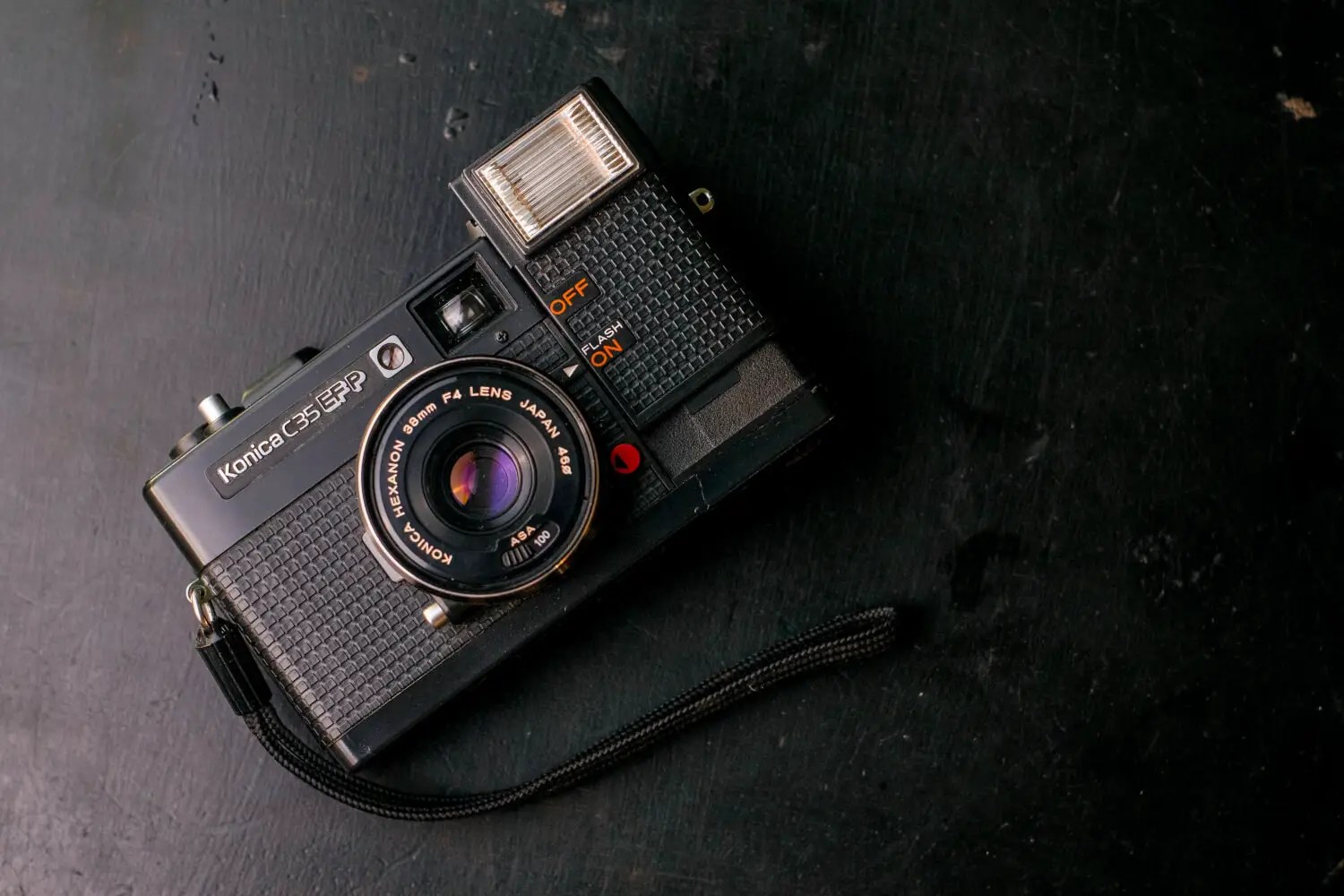I was 22 and we were eating at my grandfather’s. I knew he had a camera when he was younger, so I asked him “Do you still have it?” After his “Do not break it” speech he told me where to find it. I ran immediately upstairs to what used to be my father’s room, opened the closet door, and started rummaging around, looking for it.
I found a couple of slide projectors, some boxes filled with slides and later on a rectangular leather pouch; I opened the zipper to find a plastic compact camera, which had a crack near the battery compartment cover lid that made it stay open, so no flash to begin with.


To me, it was anticlimactic; I was hoping to find a Nikon F or a Pentax Spotmatic. I was a little disappointed and so the camera ended up on a shelf for a couple of months.
One day, as I had some rolls of Fomapan 400 Action to spare, I thought about giving it a chance, even though it wasn’t easy, since I had zero experience shooting photos without a light meter. Moreover, the fact that it had only three aperture settings (f/4, f/8 and f/16), a 38mm fixed focal length Konica Hexanon lens, and that the camera shot at 1/125 made me think about each frame.
Luckily, I found a grid with all the combinations between ASA, aperture and shutter for each lighting condition this was a game-changer (for me). Now, I had the tools needed to make some decent exposures without worrying too much.





Having so little to interact with made me focus on the composition of each shot and, in some cases, the limitations forced me to reflect on how to make a good photo with what I had.
After shooting the first 8 frames it was all joy— just advance, compose, shoot. I didn’t have to worry about nailing perfect focus or exposure; it was all about enjoying the tool I was using and not getting lost in the expectations of taking the perfect picture.





When the roll was done, I sent it to develop. When the results came back from the lab, I fell in love with the Konica, not because the pictures were incredible, or because they were extremely sharp or exposed properly, but because this was the camera that help me discover a new way of taking pictures, a new way to enjoy nature and shooting, without having much control over what you do with the camera, imposing its limitations on your game, making you think creatively.
This is the gift that the Konica C35 EFP gave me.
~ Diego
Share your knowledge, story or project
The transfer of knowledge across the film photography community is the heart of EMULSIVE. You can add your support by contributing your thoughts, work, experiences and ideas to inspire the hundreds of thousands of people who read these pages each month. Check out the submission guide here.
If you like what you’re reading you can also help this passion project by heading over to the EMULSIVE Patreon page and contributing as little as a dollar a month. There’s also print and apparel over at Society 6, currently showcasing over two dozen t-shirt designs and over a dozen unique photographs available for purchase.








2 responses to “A creative machine: The Konica C35 EFP”
Does this camera only take pictures in black and white or was that just the film you were using?
These views of Buenos Aires are super interesting, very different from the usual images I see from, admittedly, touristic sources. Portraits of the city, thank you, a nice tool to get along your vision.